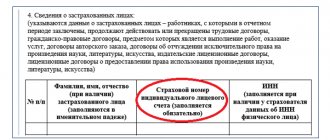Do you want to renovate your office space? Have you moved or decided to update your employees’ workspaces because the existing furniture is no longer suitable? Then you have found what you were looking for! Despite the fact that old furniture is essentially garbage that belongs in a landfill, you cannot simply throw away inventory that is on the balance sheet of an enterprise. The write-off of furniture in an organization and its subsequent liquidation require the participation of specialized companies that ensure competent organization of the process and provide all the necessary documents. Our company has extensive experience in the field of write-off and recycling. All our specialists are highly qualified and will be happy to help you in solving problems with writing off furniture in any volume. The speed of our work will also pleasantly surprise you.
Reasons for writing off office furniture
As practice shows, office furniture, as a result of intensive and often careless use, becomes unusable much more often than one might imagine. The main reasons for write-offs are usually the following:
- significant adverse changes in the appearance of furniture due to prolonged or careless use;
- functional damage that creates inconvenience or danger for subsequent operation.
In practice, it looks something like this: cracks and chips appear on the tables, the surface darkens, and drawers become loose. Chairs, especially “computer” ones, have handles that break, the fabric surface gets worn out, or the rollers are damaged, which reduces the stability of the chair and, as a result, threatens the safety of the employee. Cabinets often “suffer” from swelling of the veneer and destruction of the varnish surface. Naturally, such furniture loses its presentable appearance, significantly reduces the comfort of employees, the respectable appearance of the office and, as a rule, needs to be replaced. However, before updating inventory, it is necessary to make room for it and write off office furniture in accordance with regulations and legislation.
How are furniture written off in municipal institutions?
Please note: we serve both commercial firms and enterprises, and also write off furniture in budgetary institutions. As a rule, the procedure for writing off municipal property is regulated by the managers of fixed assets of these organizations, and in order to remove this or that inventory from the balance sheet, a resolution of the current commission of the institution is often sufficient. However, in cases where write-off implies further liquidation, a specialized disposal company may be involved to carry out complex work, which includes not only write-off, but also subsequent disposal, so by contacting us, you receive comprehensive qualified assistance from specialists, and accordingly you can be confident that all work will be completed efficiently and on time.
In what cases is upholstered furniture written off?
In addition to standard office furniture, we write off upholstered furniture: this request is most often made by boarding houses, sanatoriums, hotels, both public and private. As a result of negligence, negligent handling and intensive use, sofas and armchairs located in the halls and common areas of such institutions are often characterized by worn out upholstery, sagging springs, cracks and chips on wooden elements. Of course, damaged old furniture can easily ruin the reputation of an establishment, which, in turn, will reduce the influx of customers. Therefore, it is advisable to promptly write off furniture and update inventory.
It is difficult to imagine the life of a modern resident without blinds, which have become a part of our lives. At enterprises, they present convenient curtains that regulate the level of illumination in the room. Devices that create comfortable conditions for employees of office companies are multifunctional. They are designed to control natural light and decorate the room, creating a cozy atmosphere and aesthetically organizing the space. But there are situations when it is necessary to replace blinds, write them off and draw up a corresponding report.
Where do blinds most often break?
Most managers prefer blinds because of their compactness, convenience, and ease of maintenance of the structure. It has become commonplace to use in such establishments:
- kindergartens, schools, sports complexes
- hospitals, sanatoriums, boarding schools;
- entertainment, office centers;
- banks, post offices.
Businesses are happy to organize their space using blinds.
It is no secret that most institutions, wanting to save money when purchasing goods, do not delve into the strength and reliability of the elements used in the configuration, which leads to inevitable breakdown of the structure. If the operating rules are not followed, the structure or individual elements may break down. Restorable blinds can be saved, but the structure cannot always be repaired.
Reasons for different types
The reasons for write-off largely depend on the type of furniture. Let's look at the most common of them.
Office chairs and armchairs
Among the reasons causing the need to write off office chairs and chairs, the following points can be highlighted:
- damage to the leg, back, armrest;
- seat deformation;
- faded upholstery;
- scratches and holes in the upholstery material;
- loss of aesthetic properties of wood.
Closet
- breakdown of fittings (mechanical parts);
- the formation of noticeable gaps due to weakening or unsticking of tenon elements;
- warping of doors, insert shelves;
- breakdown of fittings;
- darkening of varnish;
- darkening of wood;
- destruction of the structure of the material due to the appearance of stains (during exposure to chemicals), aging, fading;
- corrosion;
- damage to the facing material by mold
Carpet
Despite the fact that carpet is not technically furniture, it is subject to write-off according to the same principle as other structures discussed earlier. Reasons include discoloration, formation of bald spots, spots, and holes.
Curtains
More often than not, curtains are susceptible to fading due to exposure to sunlight. But other defects may also form, such as the appearance of spots and holes.
Cushioned furniture
In addition to standard furniture, upholstered furniture is also subject to write-off.
Such procedures are carried out in hotels, sanatoriums, and boarding houses. Structures located in public areas quickly deteriorate due to active use and negligence of visitors and staff. The reasons for write-off measures include wear of the upholstery, sagging springs, cracks and chips.
Of course, an unaesthetic interior can easily ruin the organization’s reputation and reduce the flow of clients. In this regard, write-offs must be carried out in a timely and competent manner.
When is it possible to write off blinds?
There is a natural need to write off such inventory. But a competent execution of an act is required, which indicates the reason for decommissioning the equipment, certified by the members of the commission. The reasons must be compelling so that the regulatory authorities do not have additional questions and doubts regarding the regularity of this operation.
The wording about exceeding the service life of the structure will not cause problems. Here it is necessary to distinguish between the guarantee period and the period approved by the establishment. The useful life of blinds is confirmed by the conclusion of the commission, which regulates the replacement of such equipment in accordance with sanitary and hygienic requirements in a given institution. The inventory record card indicates the start of operation of the blinds, and a document is left in the accounting department indicating the useful life of the blinds.
Safe disposal
Disposal of a safe in organizations when performing this manipulation for the first time raises many questions. What can you do with a metal box: sell it for scrap, flatten it?
How to write off a fixed asset and register a business transaction?
The decision to dispose of the safe is made by the commission. To confirm this need, a technical examination is carried out. Its results are documented in an act approved by the head of the company or institution. The reasons for moral or physical wear and tear must be indicated. For example, in the following wording: “The safe is not subject to further use due to physical wear and tear. Repair is not practical."
The act is needed to prepare the write-off act.
After completing the documents, it is possible to directly dispose of the equipment, namely, transfer:
- to a company that has a disposal license,
- for scrap metal.
The accounting department handles write-offs.
Contact a specialized company so that not only the recycling, but also the removal of old equipment will be handled by professionals. Old safes weigh differently depending on the model. Even small boxes are very heavy. But you need to take the safe out of the building and load it onto the transport. Do not load it yourself - it is dangerous to health and life. You can also damage your car with heavy equipment.
Professional employees offer to quickly lower the safe, carry it and lift it into the car, secure it and take it away for disposal. As a rule, 4-6 people are needed for all manipulations with safes.
There are also lighter safes. For example, modern burglar-resistant and fire-resistant structures are assembled from composite materials.
Reasons for writing off the mirror
Reasons why blinds fail prematurely
What reason is indicated when drawing up a write-off act:
- Deterioration of property due to the failure of individual elements (frame, lamellas, sliding mechanism) that cannot be restored. A fragile structure, if not used correctly, can break before the designated period of operation. The materials used in the production of modern structures designed to create comfort for visitors and employees affect the quality of the structure, and therefore the service life. The use of low-quality materials used by unscrupulous manufacturers leads to premature failure of the blinds.
- An obsolete design that does not meet the aesthetic requirements of the room.
If a modern renovation is made, after which vertical blinds, which looked organic in the previous design, are out of place in the current interior. - Intentional and unintentional acts of aggression resulting in the deterioration of the property, resulting in the blinds being beyond repair.
- It is inappropriate to spend funds on expensive structural repairs that are unprofitable for the enterprise. The ineffectiveness of restoration work is confirmed by a reasoned explanation.
- Hygienic requirements to ensure normal conditions, confirmed by the conclusions of the relevant authorities (instructions from the sanitary and epidemiological station). In children's institutions, they strictly monitor the use of serviceable structures, therefore, guided by the instructions of the regulatory authority, you can write off blinds without problems.
- Wear of fabric fragments that cannot be replaced, leading to insolation of surfaces in the room.
Irritating solar radiation harms the health of employees, patients, visitors, and also leads to fading of indoor surfaces (furniture, carpets, wallpaper). - Expiration date.
If the furniture is damaged
Furniture that is used in commercial premises, be it restaurants, hotels, offices, shops, factories, becomes unusable much earlier and more often than what happens with structures at home.
During intensive use, individual units may break down, become irreversibly dirty, tear, scratch, or fade. Data that such property has become unfit for use is recorded when compiling inventory papers or discovering similar facts.
The documentation shows the types of damage, for example:
- breakdown of the frame part, including legs, tabletops, seats, walls, armrests, doors;
- breakdown of the main functioning mechanisms that facilitated the operation of structures;
- deformation of individual elements as a result of excessive heating, high humidity, and wetness;
- wear of the upholstery as a result of the influence of the temporary factor;
- defects associated with facing furniture surfaces.
All these damages imply the need to write off and note these aspects in the act. There is only one condition: the costs of restoration exceed the costs of purchasing new units. Information about how much repair work will cost can be obtained from organizations that specialize in this type of service.
How to draw up a write-off act?
Blinds are inventory items and are the property of the organization. If a product cannot be used at the enterprise as a result of loss of quality, defects, or breakdown, then to confirm the fact of write-off, a document is drawn up in accordance with the established TORG-16 form. Write-offs for other reasons are drawn up in any form, taking into account the company’s office work standards.
The causes of furniture defects can be divided into several groups.
The main causes of defects arising from violation of the rules for operating furniture are: storage in a damp room; increased temperature and excessive dryness of indoor air; installing furniture close to heating appliances; lack of gaskets when installing products on top of each other; stacking a large number of products one on top of another; careless handling of furniture when moving, arranging and storing.
If the rules for transporting furniture are violated, defects may occur. This occurs mainly due to the lack of soft pads in places where furniture comes into contact with containers or ropes, as a result of impacts and friction during careless loading and unloading, when using containers made of wood with a moisture content above 20%, or when moisture gets on the surface of the furniture.
The most common causes of defects may be aging of the glue due to the long service life of the furniture without timely preventive work; abrasion of wood in places of contact of moving parts due to prolonged use; careless handling of furniture, its use for other purposes; inaccurate movement and rearrangement, leading to the appearance of dents, pins, burrs, flakes on the front surfaces; wear of the facing material on the elements due to prolonged use without careful care and timely cleaning.
Defects in coatings on the front surface of furniture during a long period of its operation can be divided into two subgroups. The first is defects in transparent coatings. The reasons for their appearance are: long service life without timely care of the front surface; the initial stage of destruction of the top layer of the finishing coating due to a sharp difference in temperature and high air humidity or due to aging of the film. Hairline cracks appear as a result of aging and loss of mechanical strength. Cracking is the process of film destruction as a result of deformation of wood under a layer of varnish due to strong stress in the varnish layer; contact of hot water, cologne, acetone on the film; exposure to sunlight on coatings.
Defects in opaque coatings arise for the following reasons: long service life without timely maintenance of the front surface; careless handling of furniture and its use for other purposes; touching hot, incandescent objects; contact with hot water on the surface; sudden changes in temperature and relative humidity; surface aging and loss of mechanical strength of the coating due to long-term use.
Defects caused by damage to wood by insect pests appear in the form of holes on the surface of furniture of various sizes - from 0.1 to 2.3 mm - with drilling flour protruding from them. The material is damaged by the furniture grinder beetle, the house beetle, and the mottled beetle. These defects can be prevented by taking preventive measures: regularly and thoroughly ventilate the room; do not place bulky furniture against cold external walls that would interfere with free air circulation; Do not keep an excessive amount of furniture and other things in the room.
Before repairing, it is important to identify all furniture defects that need to be eliminated. Conventionally, they can be divided into several groups: weakening and destruction of tenon joints; wear and breakdown of components and parts; defects in veneering and lining of polymer coatings; wear of the paintwork; damage to upholstery material; wear of soft elements; damage to springs, fittings and components. The share of each of the listed defects in the total amount of work is not the same, so this chapter describes in more detail how to eliminate the most common faults. Depending on the degree of damage, repairs can be minor, medium and large (major), and depending on the nature of the damage – carpentry and finishing. Carpentry repairs include replacing individual parts of the product, re-gluing, installing additional fasteners, and so on. Finishing repairs consist of updating the decorative finish of furniture.
Carpentry repair of furniture is the most common; it aims to restore the original shape and integrity of the product. During the carpentry repair process, the product is disassembled, lost or damaged parts are manufactured, and the furniture is subsequently assembled and finished.
The product is disassembled if the damaged part needs to be processed on a workbench, machine, or replaced. When there is no need for disassembly, work is performed on the assembled product.
Sturdy components often cannot be disassembled and must be treated with steam or hot water. To do this, apply a thick, clean fabric that absorbs and retains moisture well over the adhesive seam. Then the assembly is moistened with hot water and covered with plastic wrap, which promotes better steaming. Steam and water pass through the adhesive seam, after which the unit can be easily disassembled. Nails and screws used for additional fastening are removed, and the assembly itself is cleaned of old glue and dust.
If part of a part is lost, then glue the necessary piece, if possible, from the same type of wood.
If the synthetic lining of the edges of panel furniture parts is damaged, it is not necessary to replace the entire panel. It is easier to replace damaged film with a new one. Remove damaged cladding from the edge of the panel using a hot iron set to “silk” mode. To prevent the soleplate of the iron from becoming contaminated with glue, use a paper pad. The softened glue and the remaining lining are removed with a spatula or a knife blade. Remains of glue are cleaned off with sandpaper. To avoid rounding the edge, use a guide block-spacer.
The material for cladding the ends of the panels is produced in various widths and colors. It is sold in the form of strips rolled into rolls. For cladding, take a strip that is slightly wider and longer than the surface being repaired. When gluing, place a protective pad made of Teflon or aluminum foil under the iron.
Start ironing the new cladding from one end, slowly moving the iron. The ironing speed should be approximately 10 mm per second. After the cladding has cooled, cut off the excess ends of the material by placing the shelf vertically on a hard surface. Overhangs are removed flush from the surface of the panel with a cutter or a special tool.
The corners of the edges are slightly rounded with a sanding iron, which is a wooden block wrapped in fine-grained sandpaper.
The tenons in the product become loose as a result of the use of low-quality glue, the use of damp wood and the impact of heavy load on the connection during operation. During repairs, the product is disassembled, the joints are cleaned and glued back together. You can use cotton wool, gauze or a bandage as a sealant. If the tenon is broken or the structure of the material has changed due to mechanical stress, it must be replaced with a new one. To do this, make a blind hole in the place where the old tenon was placed and place a tenon of the required size and shape on the glue.
Door panels, cabinet doors and other products may become warped during operation due to loose hinges. The reasons for this may be the incorrect method of attaching the hinges, corrosion of the screws, or careless handling of the furniture.
Eliminating misalignment involves replacing unusable hinges or screws. Having removed the loop, drive a peg into the old socket and screw a new screw into it. So, replace all the hinges or screws with new ones without removing the door, if possible.
The fastening of combined four-hinged hinges on furniture doors made of particle boards becomes loose over time, and the screws and hinges fall out of their sockets. If the door is opened too wide at the location where the hinge is installed, the part may break. It is not worth replacing the entire door or the entire cabinet because of such a breakdown. It is more advisable to repair the door by restoring the destroyed socket using hardwood inserts.
The liner is prepared in a trapezoidal shape, with the long side facing deep into the part. The thickness of the workpiece is selected depending on the part being repaired, and its dimensions must completely cover the damaged area.
Then the sample for the liner is marked, tracing the outline of the workpiece with a pencil. After this, a sample is made in the door (it is better to carry out this operation using a milling machine). The stop limiting the milling depth is set so that the remaining wall thickness is at least 2 mm. The liner is tried on the recess and adjusted. Then they apply glue to both mating surfaces, allow time for the glue to set, then compress the parts and leave them under the press until the glue dries completely. Gaskets are placed under the jaws of a clamp or press, protecting the facing layer of the part from damage.
After the glue has dried, drill a blind hole for the hinge. The door repair is completed by sanding the repaired area and tinting it to match the furniture.
Small cracks, depressions, and scratches can be quickly repaired with putty consisting of glue and small sawdust. To do this, you need to clean the area with the defect and fill it with putty, then treat it with sandpaper, tint it and varnish it.
Small cracks can be sealed by cleaning them from dust and dirt. After drying, the crack is filled with hot wood glue and kept under pressure until dry.
Small dents are treated with steam, making several cuts or scratches on the damaged surface. After this, apply a wet napkin and press it with a hot iron.
Under the influence of moisture and heat, the wood fibers expand and the damaged area is leveled. After drying, the corrected area is sanded and varnished.
Chips and flakes are corrected by gluing them with wood glue. The glued area is kept until the glue hardens, it is cleaned with sandpaper and the peeling part is finished with facing plywood.
If peeling of the veneer begins, the damaged area is ironed with a hot iron through oiled paper. If this procedure does not give a positive result, then cut through the loose veneer and use a heated syringe to inject a hot solution of wood glue under it. The facing material is rubbed tightly onto the base, oiled paper and weight are applied. After exposure under load, the repaired area is finished to match the color of the product.
Finishing repairs of paint and varnish coatings are carried out as follows. If the opaque finish is damaged, first remove the old layers of paint, then prime the surface and putty. The prepared part is coated with new enamel, matching it to the color of the old one.
To remove old paintwork from the surface, the following means are used: an aqueous solution of ammonia; an aqueous solution of sodium hydroxide (350 ml per 1 liter of water), to which up to 100 g of cresol is sometimes added; an aqueous solution of oxalic acid (50–100 ml per 1 liter of hot water); an emulsion of two parts ammonia and one part turpentine.
After removing the old varnish and polish, the surface is washed with gasoline or turpentine, thereby preventing a change in the natural color of the wood. After all chemicals, the surface must be thoroughly washed with water and dried. Washing off old paint and varnish coatings from veneered surfaces can lead to weakening of adhesive joints, therefore the temperature of the cleaning solutions in this case should not exceed 25 °C.
Particular attention is required when removing old polyester coatings, which are extremely durable and difficult to dissolve. They are removed by chemical or thermal methods.
With the chemical method, removers are applied to the surface to be renewed with previously applied deep scratches in the form of cells at a distance of 15–20 mm from each other, without damaging the facing layer. In table Table 1 shows the composition of the most accessible and effective removers that are used to remove varnish coatings from the surface of wood and wood-based materials.
When furniture is received for repair, it is of great importance to accurately determine all defects and establish the reasons that caused a particular defect in the product. The causes of defects can be divided into the following five groups: 1) violation of technological regimes and technical requirements during the manufacture of furniture in production; 2) violation of the rules for storing furniture in warehouses; 3) violation of the rules for transporting furniture; 4) careless handling of furniture during its operation; 5) damage to wood by house pests.
We organize the process of writing off material assets
Material assets are subject to write-off if they:
- Consumed during the normal production process in the manufacture of final products or semi-finished products.
- They have lost their original properties and cannot be used for their intended purpose.
In the first case, for the write-off of each batch of raw materials and materials, there is no need for a special written permission from management - the write-off is carried out according to established standards, which must be justified and approved by the head of the enterprise. The write-off process has its own characteristics, which will be discussed in one of the subsequent sections.
In the second case, writing off valuables requires an individual approach, and in each case, writing off is carried out on commission.
Methods for writing off material assets should be reflected in the accounting policies of the enterprise. Detailed write-off processes (templates for documents for write-off, regulations for their execution and reflection on accounting accounts, other aspects) are prescribed in the internal regulations of the enterprise (Regulations on accounting and write-off of valuables, orders, instructions, instructions).
Thus, even before the start of writing off assets, the enterprise needs to regulate this process (develop internal regulations and instructions) and consolidate important accounting aspects in the accounting policy.
DEFECTS RESULTING FROM VIOLATION OF FURNITURE STORAGE RULES IN WAREHOUSES
Furniture made from wood is very sensitive to changes in temperature and humidity in the room. The room in which furniture is stored must be dry, with heating and ventilation. The air temperature should be maintained within 18-20° C; relative air humidity is within 55-70%. When furniture is stored for a long time in a damp room, its varnished and polished surfaces become dull; air bubbles and roughness appear; planed (cladding) plywood is falling behind; doors and drawers swell; metal parts rust; Mold appears on the padding and covering material of upholstered furniture, and mold and dark stains appear on wicker furniture. At elevated temperatures and excessive dryness of the air in the room, the joints dry out and weaken; the gaps between the moving parts of the furniture increase and exceed the standards established by the technical specifications; wide massive parts crack; a number of parts, especially doors, cabinet sides, lids and table legs, are warped. The sun's rays discolor the front surfaces of furniture. A number of defects can also result from violation of the rules when arranging and stacking furniture in a warehouse. Installing furniture at a distance of less than 0.5 m from heating devices will cause the wood to dry out, and consequently, unsticking, cracking, and warping. When placing tables one on top of another without appropriate spacers under the legs, dents and abrasions form on the table tops. When more than 6 spring mattresses are stacked one on top of another, dents form on the surfaces of the mattresses from residual deformation of the springs and the tension of the facing fabric weakens. If the furniture is not covered with paper or covers, it will become dusty during long-term storage. When moving and carrying furniture carelessly inside the warehouse and during loading for shipment, scratches, abrasions, dents, nicks, fabric tears, etc. appear on the surface of the furniture.
Basis for writing off raw materials and supplies for production needs
The Methodological Instructions for Accounting for Materials (approved by Order 119n) indicate that materials are released into production:
- in accordance with established standards and volumes of the production program (tasks) based on established limits (clauses 92 and 99);
- with the execution of the primary document for vacation (clause 97);
- under the report of the financially responsible person or unit (clauses 96 and 98).
Write-off of actually spent inventories from reporting and assignment of their value to production costs are carried out on the basis of a special act (material report), which reflects the information:
- about the material (name, quantity, registration price and amount for each item);
- about the order (product, products) for the manufacture of which the material was used;
- about abnormal costs of materials (overconsumption/savings), their volumes and reasons for their occurrence;
- other information (for example, the quantity of manufactured products, the volume of work performed, etc.).
Thus, when writing off materials for production, we are talking about 2 main documents:
- approved standards, limits;
- act for writing off materials for production.
With the help of standards, the volumes of materials supplied are controlled, and in comparison with them, the write-off act reveals overexpenditures or savings in inventories. Based on the act, expenses are reflected in the relevant accounting accounts and form the cost of finished products (semi-finished products, work in progress).
DEFECTS ARISING FROM VIOLATION OF FURNITURE TRANSPORTATION RULES
When transporting furniture, the rules established by the technical specifications must be strictly observed. When transporting over long distances by rail and water transport, furniture is wrapped in paper, matting or other similar material and packed in wooden cages made of wood with a moisture content of no more than 20%. There should be soft pads in places where the furniture comes into contact with the walls of the cage. Polished furniture is first wrapped in paper and then in dry straw or shavings. All metal parts of the furniture are lubricated with an easily removable thick lubricant before packaging. Metal parts of dismountable furniture are packaged separately in paper or placed in a cardboard box. Furniture is transported over short distances by road transport - regular trucks or specially equipped vans. When transporting furniture on ordinary trucks, soft pads are placed between the contacting parts, the furniture is tied with ropes and covered with a tarpaulin. When transported on vans, furniture is secured in them with special devices. As a result of non-compliance with the rules for packaging furniture during transportation, the following defects may appear. If the packaging crate is made of wood with a moisture content above 20%, the furniture will become damp, as a result of which the varnish film will fade, spots, roughness, air bubbles will appear on the finished surfaces, and doors and drawers will swell. If there are no soft pads in the places where the furniture comes into contact with the container, with each other or with the tie-down ropes, the furniture in these places will appear abrasions, chips, and dents. When transporting furniture in the rain without a tarpaulin, moisture that gets on the surface of the furniture will deteriorate the varnish film and white spots will appear.
If the furniture is suitable, but tired
The desire to change the environment is normal and natural not only for households, but also for entrepreneurs.
In this case, write-off occurs not because the furniture has lost its properties, but due to a change in the design concept of the object or the transition of the business to a new status with a higher level of prestige.
In such situations, they are guided by the service life of the furniture, which is established in the technical passport for it.
The write-off of office furniture due to the expiration of its service life, which was indicated in the technical documentation by the manufacturer, assumes the fact that it poses a threat and poses a danger to workers and other property. This process is carried out in accordance with the norms of the Government of the Russian Federation No. 720.
Causal factors are determined in a similar way. If, in the case of a breakdown, the write-off is carried out according to an amount comparable to the costs of repairs, then in this situation it is necessary to act according to the service life.
DEFECTS RESULTING FROM CAREFUL HANDLING OF FURNITURE DURING ITS OPERATION
A number of furniture defects occur during its operation. Some defects are a consequence of long-term use of furniture, others are the result of improper and careless handling of it. Long-term use of furniture leads to the so-called aging of furniture. Furniture joints weaken and become loose due to the aging of the glue in the adhesive joints. The planed facing plywood begins to lag behind in places. The varnish film becomes dull and spots appear on it. Contact points in moving furniture parts are erased. Long-term use on table tops, secretaries, and hard chair seats wears off the varnish film. Covering materials on upholstered furniture wear out. Furniture springs in sofas, mattresses, armchairs, etc. sag (the residual deformation of the springs is greater than normal), as a result of which the tension of the facing fabric is weakened and wrinkles and depressions appear on the seats. The padding and covering material of upholstered furniture - shavings, hair, damask, cotton wool - is worn out and felted. Metal furniture parts (handles, hinges, locks, metal frames) also undergo changes: nickel plating and paint become dull and erased from the base. The occurrence of the listed furniture defects during long-term use is quite natural. Some of the listed furniture defects and a number of others may appear on furniture from improper placement in the apartment and from careless handling of it. Installing furniture in damp, poorly ventilated rooms leads to swelling of the wood, dulling of varnish films and the appearance of stains on the front surfaces of the furniture, and the appearance of rust on metal parts. If the furniture is close to heating appliances, the wood dries out and, as a result, cracks appear, damage to varnish films, warping, etc. The following defects may appear from careless handling of furniture: dents, chips, scuffs, flakes, scratches on the front surfaces furniture due to impacts and products touching each other when rearranging furniture; breakage of cabinet furniture legs when moving products along the floor (instead of carrying them); tarnishing of the varnish film and stains from water and other liquids getting on the furniture; stains on furniture surfaces finished with alcohol varnishes and polishes from hot objects.
How to recycle an old mirror if it is intact?
You can sell your old mirror.
If you avoid barbaric methods, then the products in question can:
- Give to other people;
- Offer to charities;
- Sell to those who need to equip new commercial spaces.
For reference! On average, 10-11 million m2 of mirrors are produced in Russia every month.
The demand for these products is constant, with slight fluctuations observed from time to time. Therefore, you can offer citizens a second-hand mirror. The problem is that there are superstitions among the population. Their meaning is that misfortunes and illnesses can be transmitted through mirrors. Another option is that through them you can take away happiness and good luck. How justified they are is a matter of faith.
For those who ignore signs and superstitions, the above options will help not only to dispose of the mirror competently and correctly, but also to make money from it. The option of selling these products for equipping commercial spaces is especially suitable. New enterprises are trying to save on the purchase of equipment and repairs and are looking for cheap options. Used mirrors are just that case.
The sale advertisement can be posted on online trading platforms. The most common is Avito. A good description, indication of parameters, as well as detailed photographs and a price significantly lower than the market price - all this sells in a matter of weeks or days. Additionally, you can order advertising on the service. It is not expensive, its cost can be taken into account in the price of mirrors, but due to this, the ad will be in the TOP for some time.
The sale option is suitable for both those who have large volumes of mirrors left and those who have a single product. The main requirement is that only a whole mirror is sold, not a broken one.
Preparing to transport the mirror
If anyone is interested in purchasing face mirrors, you will have to prepare them for transportation.
Transportation will also be required in case of disposal for recycling. To do this you need:
- Cover the surface (back and front walls) of the product with tape, thereby preventing the scattering of small pieces in case of breakage;
- Wrap with bubble wrap. An old blanket will do;
- Each mirror is sealed and wrapped separately, with foam rubber, fabric or polystyrene placed between them;
- The products are placed in a box in several pieces so that the points of contact are protected with rags or other shock-absorbing material.
It is recommended to place no more than 2-3 mirrors in each package. They are heavy, and excessive load increases the risk that the products will not reach their destination and will break.
It makes sense to sell products locally and avoid shipping. Otherwise, after discussing all the nuances and risks with the buyer, take a partial or full prepayment from him. Even if some mirror breaks along the way, and half of the requested amount remains on hand, this is much more than the processing enterprises will offer.
DEFECTS CAUSED BY DAMAGE TO WOOD BY HOUSE PESTS
Household pests that attack furniture wood include the following insect pests: furniture borer beetle, house borer beetle, red house longhorn beetle, black house longhorn beetle, wood-boring beetle, variegated borer beetle or watchmaker beetle, termites - white ants.
The larvae of these pests feed on wood, making passages—holes—in it. The presence of a large number of holes on the surface indicates that the wood has undergone significant destruction. B.V. Malyshev and others. “Furniture repair”. M., 1965
Sample defect report
There is no established template according to which the write-off procedure is carried out, so the enterprise has the opportunity to independently develop and approve it. The completed act must contain the following information:
- the name of the furniture structures that are being written off;
- total quantity (in units);
- identification codes and signs;
- the results of the inspection by a commission including senior employees of the organization;
- causative factors (breakage, deformation, defects);
- general conclusion;
- signatures belonging to responsible parties.
Documents for download (free)
- Form No. OS-4b
If we look at a specific example of a document, we can note that it includes several points:
- “Hat”, which indicates the word “I approve”, the name of the general director, and the date of compilation. Then it is signed with the word “Act” in the center, and the title of the document from a new line in the middle is “write-off of furniture, inventory, equipment.” All members of the commission are listed below, it is indicated that they examined certain pieces of furniture and found them to be written off on certain grounds.
- The basic part, represented by a table. The first column displays the name of the structures to be decommissioned. The second indicates the inventory number, then the unit of measurement, quantity. The last column is the general technical condition and causal factors.
- The final part begins below the table and includes the immediate conclusion, information about the group members, and results.
The document must be drawn up in a special form and include the necessary signatures and seals.
Mirror with yellow spots and stains
High temperature of solutions. There is little ammonia in the silver solution. Poor quality distilled water (lots of salts). Activation was not carried out properly - after applying stannous chloride, dissolved was poured on. water not evenly or insufficiently over time.
Add ammonia to the silver solution (the solution should be completely transparent). Cool the solutions to room temperature (about 20 degrees). Monitor the timing and uniform application of solutions and dispensers. water during activation (at least 3 minutes).








